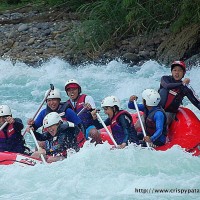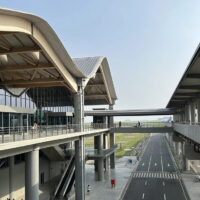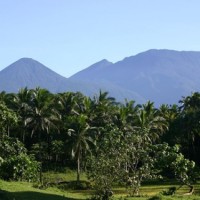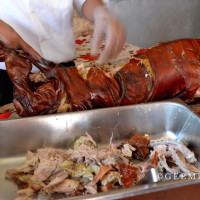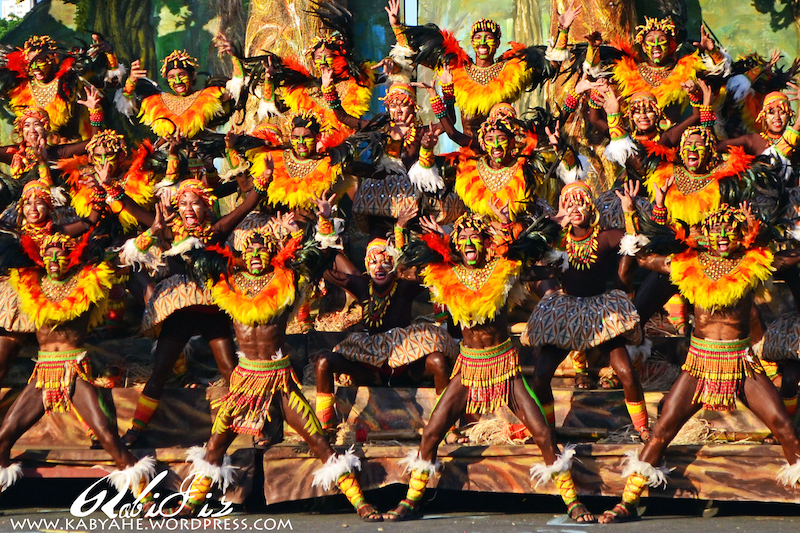
The Philippines is a country rich in cultural tradition and one particular characteristic of its people is its love of community-wide celebrations. With an impressive diversity of cultural minority groups and provinces, each having their own unique heritage, the Filipinos has more than a hundred festivals celebrated across its different regions throughout the year. Many of these celebrations are influenced by their religion and related to their livelihood such as time of harvest.
Here is a list of some of the most colorful, fascinating, and fun-filled festivals of the country. And of course, everyone is welcome to join and party -Filipino-style.
Dinagyang Festival. This festival held every fourth weekend of January in Iloilo is always a crowd drawer. The festival is a celebration to commemorate the Christianization of the natives and in honor of the Holy Child Jesus or Señor Sto. Niño. The festival is characterized by a colorful parade of people dressed in unique costumes dancing and chanting “Viva Señor Sto. Niño” amidst the hypnotic drum beats.
Sinulog Festival. This festival is Cebu City’s festival of festivals. It is celebrated every third weekend of January, in honor of the Holy Child of the shores. It is a century-old tradition kept by the people in this part of the country (Visayas Region). It is uniquely characterized by the “two-steps forward and one-step backward” shuffle synchronized to the thundering drum beats and shouts of “Pit Señor”. Like the Dinagyang Festival, street dancers during the procession include international tourists from all over the world.
Panagbenga – Baguio Flower Festival. This festival of flowers is celebrated in Baguio City, the summer capital of the country, every 23rd of February until 3rd of March. The festival was created as a way to give importance to the city’s cut-flower industry and as a way to rise up from the ruins of the devastating 1990 Luzon earthquake where the city lost hundreds of lives. The festival highlights themed floats adorned with colorful flowers somewhat similar to Pasadena’s Parade of Roses. Part of the celebration is street-dancing where people are dressed in multi-hued and flower-inspired costumes.
Moriones Festival. This festival is celebrated during the Holy Week in Boac, Magpoc, Marinduque. This is a colorful religious festival highlighted by a reenactment of the life of Longinus culminating in his beheading. “Moriones” are the men and women posing as Roman soldiers and centurions, clad in costumes and masks. The reenactment occurs in the three towns Boac, Morpog and Gasan, virtually converting these towns as huge stages for the reenactment.
Cutud Lenten Rites. This festival held every Good Friday in Cutud, San Fernando, Pampanga, has gained international prominence because of the unique way of performing the ancient ritual of Christ’s crucifixion and death at the cross. This festival starts with penitents from all over the country walking their way to Cutud while doing acts of self-flagellation (striking body with burillo whips) and culminates with the penitents being literally nailed to the cross.
Pahiyas Festival. This is an annual celebration every May 11- 15 in Lucban, Quezon, as a way to usher in a bountiful harvest and to honor the farmer’s patron saint, San Isidro Labrador. Every home is decorated with every agricultural produce (fruits and vegetables) of the town. Up for grabs are the “kiping” – a colorful hanging rice tortilla in houses for every visitor to have a taste.
Learn more about the Pahiyas Festival in Lucban.
Parada ng Lechon. This festival is celebrated every June 24 in Balayan, Batangas, where several succulent roasted pork (lechon) with all kinds of décor are on parade. The festival also coincides with the Feast of St. John the Baptist, so visitors who come to celebrate the festival should be prepared to get drenched as people douse everyone with water.
Kadayawan sa Dabaw. This festival is held in Davao City every third weekend of August. It is a celebration of the bountiful harvest of fruits and orchids – Davao’s best products. The festivities include fruit and flower show, tribal / civic / military parades, trade fair, horse fight, and street dancing.
Maskara Festival. This is the biggest festival of Negros Occidental in Bacolod City. The festival coincides with Bacolod City’s charter day celebration, making it a week-long display of festivities – cultural shows, sports competition, beauty contests, and highlighting the event is a Mardi Gras-inspired parade of people in colorful costumes and masked street dancers.
Learn more about the Maskara Festival in Bacolod City.
Feast of San Clemente/Higantes Festival. This joyous fiesta celebration in honor of San Clemente is held every November 22 – 23, in Angono, Rizal. The patron saint’s image is borne by male devotees during the procession, the highlight of which are the “higantes” or giant paper mache effigies. A fluvial procession in Laguna de Bay culminates the event.
Pintados-Kasadyaan Festival. Dubbed as “the festival of festivals”, this colorful celebration merges two of Tacloban City’s most beloved yearly events. On June 29 of each year, the locals dress in vibrant costumes and body paintings, remembering the ancient ‘pintados’ or the tattooed warriors of old. The festival honors Senor Santo Nino or Child Jesus.
Learn more about the Pintados-Kasadyaan Festival in Tacloban.


